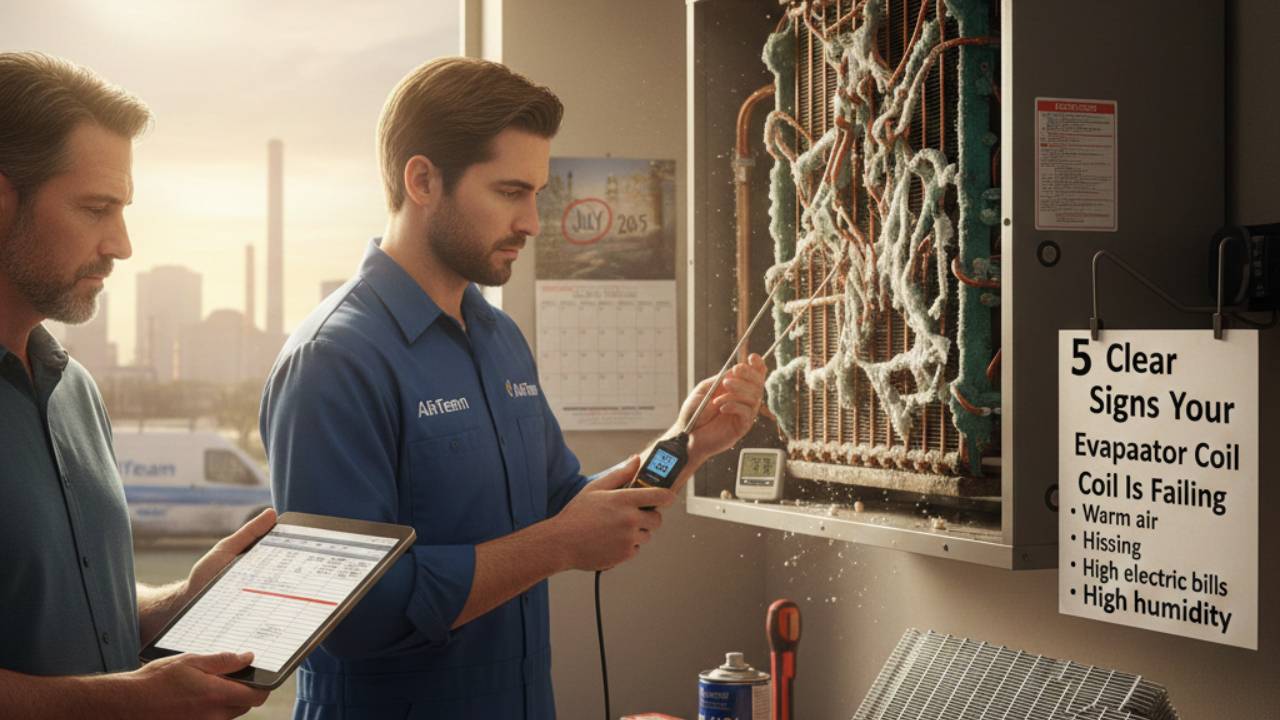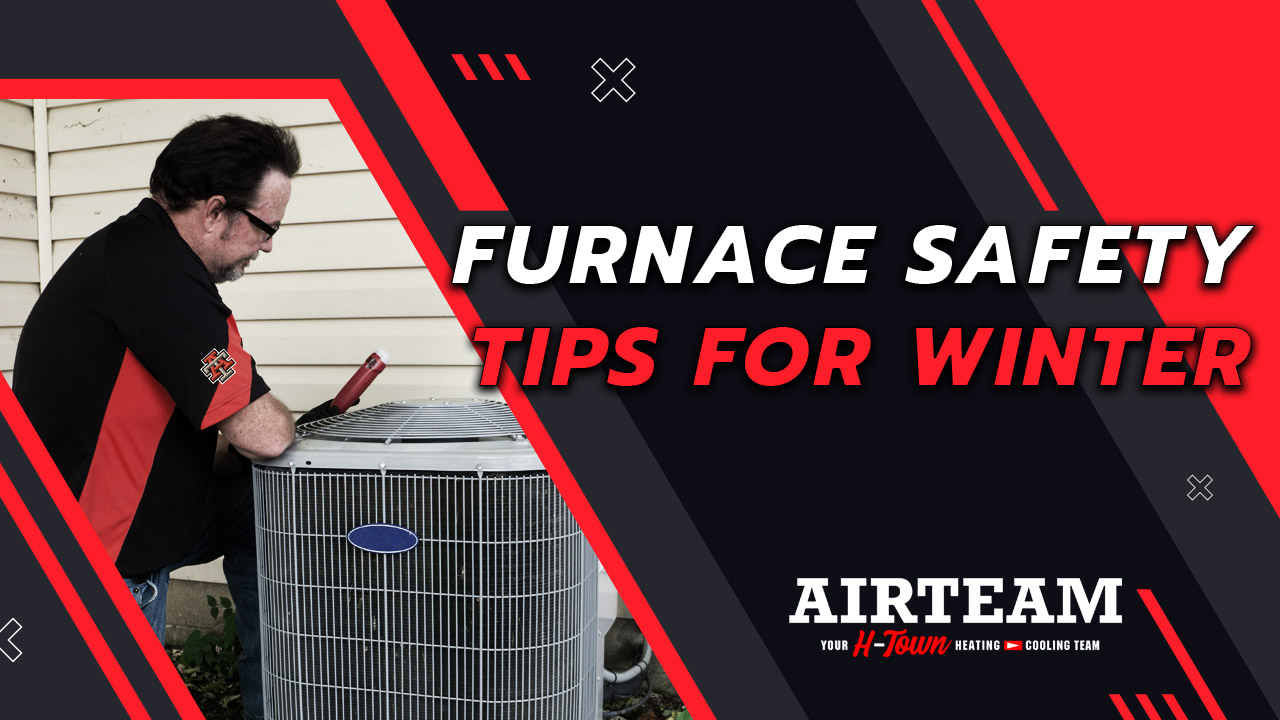A: The condenser coil is a coil that’s located in the outdoor unit, which is the condenser unit. The condenser houses the compressor in the middle and it’s surrounded by a large coil. That really dictates the size of the condenser outside.
The higher efficiency systems these days have huge condenser coils. You’ll notice that the new condensers a lot of times are a lot bigger than the older, lower-efficiency condensers.
It’s simple math, you have a much larger surface area on the coil outside. So, you can have more heat transfer outside, making the system more efficient.
It’s where heat is being removed from the refrigerant that is traveling from the coil in the attic to the condenser before it gets to the compressor and turns back into liquid and then cycles again.
So, the condenser coil is a very important component and has to be kept clean. If you reduce the airflow outside through the coil. You know, as that fan sucks the air out of the condenser and in through the coil, then you compromise the efficiency of the system, and you could compromise the life of the compressor.
Does Your Houston HVAC System Have You Confused?
If the inner components of your Houston HVAC system and how they work are a mystery to you, you’re not alone. Most homeowners just know that when they want it cold, they push a button, and boom—frosty! When they want it warm—which is rare in Texas, where we have three summers—they do the same and it’s nice and toasty.
However, not many realize just how complex and precise your average Houston HVAC system is. Within your attic or AC closet and outdoor in the unit, there are many critical components at work.
Whether you run your air conditioning all day, every day, or if you only turn it on a few times during the day—routine maintenance is crucial to system health. This regular maintenance can help detect developing issues with your system before they cause a major failure.
If you want to make your HVAC system less of a mystery, then you can start by getting to know the components at work inside. As we can’t cover all the components in one blog, you may notice that we’ve been talking about coils a lot lately. That’s because they’re a critical component responsible for so much. Once again, we’ll be talking about the condenser coil and evaporator coil.
Although both are very similar, they do two very unique tasks that share a common connection—regulating the air in your home.
The first thing you need to know is that on the cooling side, an air conditioner doesn’t produce cold air. Unlike a furnace that produces warm air, the air conditioner does exactly what it says—it conditions the air. It doesn’t “make” cold air. We touched on this in our last blog but we’ll go into a bit more depth and explain below.
Getting To Know Your Evaporator Coil
More specifically, the air conditioner removes heat from the air with the aid of a refrigerant, or coolant. This refrigerant is highly absorbent of heat within the air, which it can then transfer that heat outside. For this refrigerant to move around your Houston HVAC system, it needs a mode of transport, in this case, it’s through a coil. This coil, you will hear referred to as the evaporator coil. However, do not confuse it with the condenser coil. It has a completely different task.
The evaporator coil uses a refrigerant that is pumped through the coil to absorb the heat from the air in your home and then take it back outside and releasing it.
It constantly circulates through the coil to continuously remove the heat until the specified temperature in your home is reached. The thermostat is what controls that temperature setting and it communicates with the system when the temperature is reached.
At this point, the process stops until the house breaches that temperature threshold, at which point the cycle begins again. The evaporator coil and condenser coil work on opposite ends of the process. We’ll run down the evaporator coil role first.
How Does The Evaporator Coil Work?
So, the evaporator coil is situated by the air handler where the blower fan is located. The coil is usually made from copper, aluminum, or steel—all of which easily conduct heat. Most residential Houston HVAC systems coils are a series of U-shaped tubes within a system of panels.
The panels are often situated in the shape of an “A” and are lined with thin metal fins that direct air closer to the coils. Drawing the air closer to the coils makes for more efficient heat absorption.
As the system runs the compressor from outside draws the cold refrigerant through an expansion valve. In the expansion valve, the pressure of the refrigerant is relieved which rapidly cools it.
When the refrigerant leaves the expansion valve it is extremely cold which enables it to draw heat out of the air. This valve also controls the flow of refrigerant and in higher-end systems that flow can be controlled to a precise amount.
As the refrigerant flows through the coil, the blower fan draws warm air from the home over the evaporator coil. The refrigerant absorbs the heat out of the air and as it does this the refrigerant evaporates.
Additionally, when water vapor within the warm air in your house hits cold evaporator coils it condenses into water. This water drips down into the condensate pan and is drained to the outside. This is how your home is also dehumidified, which helps with cooling as well.
How Do Houston HVAC Systems Use The Condenser Coil?
Houston HVAC systems house the condenser coil in the outdoor unit located outside your home. Even though the unit as a whole is called a “condenser unit,” it actually has several components including the condenser coil and fins.
Once the evaporator coil does its job, it returns through a copper tube back to the condenser unit. Here, the warm, low-pressure refrigerant enters the compressor, the other component housed here. The compressor pressurizes the refrigerant until it’s converted to a hot, high-pressure gas.
That gas moves from the compressor into the condenser coils and releases most of the heat that was absorbed from the air in your home. The large fan on top of the unit blows air over the condenser coils.
So that most of the heat in the refrigerant is released, the many coils within the condenser give the refrigerant plenty of time to be in the path of the blowing air which removes the heat. Then, it travels back into your home and starts all over again with the evaporator coil.
It’s Important To Keep Both Coils In Good Shape
In Houston HVAC jargon, the cooling process is performed in a “closed-loop” system. This means everything is cyclical and both the evaporator coil and condenser coil put in a lot of work.
For this reason, it’s critical to make sure they are maintained well and have good airflow and no buildup of debris or dust. Buildup on these coils will impact the efficiency of their ability to transfer heat.
For the condenser coils, debris can be things like grass clippings, pet hair, foliage, and other miscellaneous objects. With evaporator coils, dust and pet dander are common sources of debris that can build up.
Protect Your System—Become An AIRTEAM MVP
In Houston, HVAC systems work overtime since we have mild winters and brutal summers. They need to be kept in optimal shape to serve your home for a long time. The best way to do that is with regular preventative maintenance.
Our MVP preventative maintenance program helps keep your system running at peak performance. It also helps catch minor problems and fix them before they turn into catastrophic system failures.
Contact us today to protect your HVAC system!




